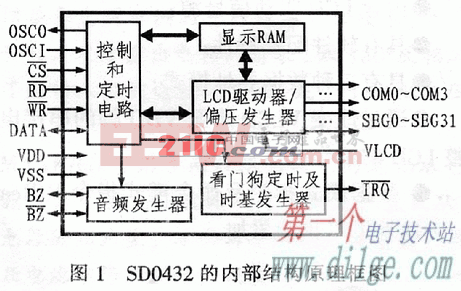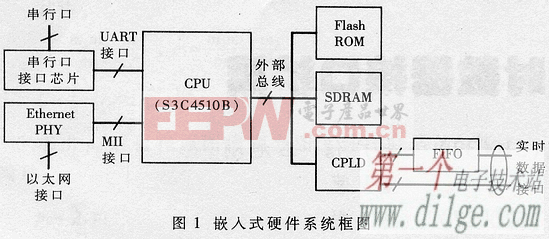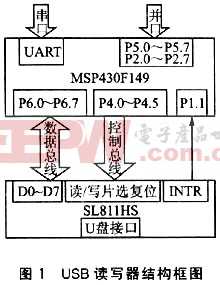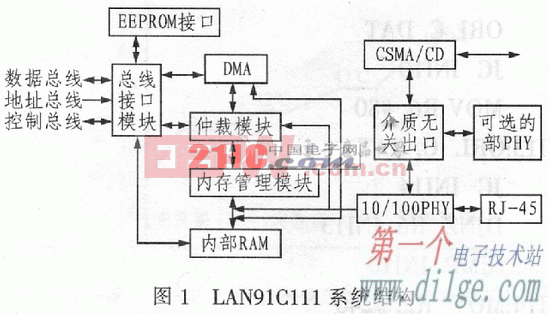S5PV210之Nand flash驱动编写
大家好,又到了天嵌【嵌入式分享】的时间,相对于前几期【嵌入式分享】做的主要是TQ335X开发板的技术分享,本期决定做同是cortex-a8系列的TQ210开发板的技术分享。本期是关于TQ210开发板的Nand flash驱动编写,可能源码部分会比较多,本文由博主girlkoo编写,感谢他的分享。
本文引用地址:https://www.eepw.com.cn/article/201610/307447.htm跟裸机程序一样,S5PV210(TQ210)的Nand flash模块跟S3C2440(TQ2440)的Nand flash模块非常相似,如果不引入ECC,驱动程序的编写也非常简单,我是使用的Linux-3.8.6(Linux-3.8.3也一样)内核,驱动的API函数有些变化,不过原理是相通的,稍微看一下内核源码并参考下其他平台的相关代码就可以自己写出Nand flash驱动了,下面是Nand flash驱动的源码,没有启用ECC,当然,你也可以改成软件ECC,但是我的觉得既然软件ECC不如HWECC快,我就采用硬件ECC吧。
#include
#include
#include
#include
#include
#include
#include
#include
struct s5p_nand_regs{
unsigned long nfconf;
unsigned long nfcont;
unsigned long nfcmmd;
unsigned long nfaddr;
unsigned long nfdata;
unsigned long nfmeccd0;
unsigned long nfmeccd1;
unsigned long nfseccd;
unsigned long nfsblk;
unsigned long nfeblk;
unsigned long nfstat;
unsigned long nfeccerr0;
unsigned long nfeccerr1;
unsigned long nfmecc0;
unsigned long nfmecc1;
unsigned long nfsecc;
unsigned long nfmlcbitpt;
};
struct s5p_nand_ecc{
unsigned long nfeccconf;
unsigned long nfecccont;
unsigned long nfeccstat;
unsigned long nfeccsecstat;
unsigned long nfeccprgecc0;
unsigned long nfeccprgecc1;
unsigned long nfeccprgecc2;
unsigned long nfeccprgecc3;
unsigned long nfeccprgecc4;
unsigned long nfeccprgecc5;
unsigned long nfeccprgecc6;
unsigned long nfeccerl0;
unsigned long nfeccerl1;
unsigned long nfeccerl2;
unsigned long nfeccerl3;
unsigned long nfeccerl4;
unsigned long nfeccerl5;
unsigned long nfeccerl6;
unsigned long nfeccerl7;
unsigned long nfeccerp0;
unsigned long nfeccerp1;
unsigned long nfeccerp2;
unsigned long nfeccerp3;
unsigned long nfeccconecc0;
unsigned long nfeccconecc1;
unsigned long nfeccconecc2;
unsigned long nfeccconecc3;
unsigned long nfeccconecc4;
unsigned long nfeccconecc5;
unsigned long nfeccconecc6;
};
static struct nand_chip *nand_chip;
static struct mtd_info *s5p_mtd_info;
static struct s5p_nand_regs *s5p_nand_regs;
static struct s5p_nand_ecc *s5p_nand_ecc;
static struct clk *s5p_nand_clk;
static struct mtd_partition s5p_nand_partions[] = {
[0] = {
.name = bootloader,
.offset = 0,
.size = SZ_1M,
},
[1] = {
.name = kernel,
.offset = MTDPART_OFS_APPEND,
.size = 5*SZ_1M,
},
[2] = {
.name = rootfs,
.offset = MTDPART_OFS_APPEND,
.size = MTDPART_SIZ_FULL,
},
};
static void s5p_nand_select_chip(struct mtd_info *mtd, int chipnr){
if(chipnr == -1){
s5p_nand_regs->nfcont |= (11);
}
else{
s5p_nand_regs->nfcont = ~(11);
}
}
static void s5p_nand_cmd_ctrl(struct mtd_info *mtd, int cmd, unsigned int ctrl)
{
if (ctrl NAND_CLE){
s5p_nand_regs->nfcmmd = cmd;
}
else{
s5p_nand_regs->nfaddr = cmd;
}
}
static int s5p_nand_ready(struct mtd_info *mtd){
return (s5p_nand_regs->nfstat 0x1);
}
static int s5p_nand_probe(struct platform_device *pdev){
int ret = 0;
struct resource *mem;
//硬件部分初始化
mem = platform_get_resource(pdev, IORESOURCE_MEM, 0);
if (!mem) {
dev_err(pdev->dev, can't get I/O resource memn);
return -ENXIO;
}
s5p_nand_regs = (struct s5p_nand_regs *)ioremap(mem->start, resource_size(mem));
if (s5p_nand_regs == NULL) {
dev_err(pdev->dev, ioremap failedn);
ret = -EIO;
goto err_exit;
}
s5p_nand_ecc = (struct s5p_nand_ecc *)ioremap(0xB0E20000, sizeof(struct s5p_nand_ecc));
if(s5p_nand_ecc == NULL){
dev_err(pdev->dev, ioremap failedn);
ret = -EIO;
goto err_iounmap;
}
s5p_nand_clk = clk_get(pdev->dev, nand);
if(s5p_nand_clk == NULL){
dev_dbg(pdev->dev, get clk failedn);
ret = -ENODEV;
goto err_iounmap;
}
clk_enable(s5p_nand_clk);
s5p_nand_regs->nfconf = (312)|(58)|(34)|(11);
s5p_nand_regs->nfcont |= 3;
//分配驱动相关结构体
nand_chip = (struct nand_chip *)kzalloc(sizeof(struct nand_chip), GFP_KERNEL);
if(nand_chip == NULL){
dev_err(pdev->dev, failed to allocate nand_chip structuren);
ret = -ENOMEM;
goto err_clk_put;
}
s5p_mtd_info = (struct mtd_info *)kzalloc(sizeof(struct mtd_info), GFP_KERNEL);
if(s5p_mtd_info == NULL){
dev_err(pdev->dev, failed to allocate mtd_info structuren);
ret = -ENOMEM;
goto err_free_chip;
}
//设置驱动相关结构体
nand_chip->select_chip = s5p_nand_select_chip;
nand_chip->cmd_ctrl = s5p_nand_cmd_ctrl;
nand_chip->IO_ADDR_R = s5p_nand_regs->nfdata;
nand_chip->IO_ADDR_W = s5p_nand_regs->nfdata;
nand_chip->dev_ready = s5p_nand_ready;
nand_chip->ecc.mode = NAND_ECC_SOFT;
s5p_mtd_info->priv = nand_chip;
s5p_mtd_info->owner = THIS_MODULE;
//扫描Nand flash 设备
if(nand_scan(s5p_mtd_info, 1)){
dev_dbg(pdev->dev, nand scan errorn);
goto err_free_info;
}
//添加分区信息
ret = mtd_device_parse_register(s5p_mtd_info, NULL, NULL, s5p_nand_partions, ARRAY_SIZE(s5p_nand_partions));
if(!ret)
return 0;
err_free_info:
kfree(s5p_mtd_info);
err_free_chip:
kfree(nand_chip);
err_clk_put:
clk_disable(s5p_nand_clk);
clk_put(s5p_nand_clk);
err_iounmap:
//if(s5p_nand_ecc == NULL)
// iounmap(s5p_nand_ecc);
if(s5p_nand_regs == NULL)
iounmap(s5p_nand_regs);
err_exit:
return ret;
}
static int s5p_nand_remove(struct platform_device *pdev){
nand_release(s5p_mtd_info);
kfree(s5p_mtd_info);
kfree(nand_chip);
clk_disable(s5p_nand_clk);
clk_put(s5p_nand_clk);
if(s5p_nand_regs == NULL)
iounmap(s5p_nand_regs);
return 0;
}
static struct platform_driver s5p_nand_drv = {
.driver = {
.owner = THIS_MODULE,
.name = s5p-nand,
},
.probe = s5p_nand_probe,
.remove = s5p_nand_remove,
};
module_platform_driver(s5p_nand_drv);
MODULE_LICENSE(GPL);
上述源码为嵌入式爱好者分享,如有更新,请咨询相关客服与销售人员,以便更新与开发。
操作所使用的硬件:
TQ210V6开发板










评论